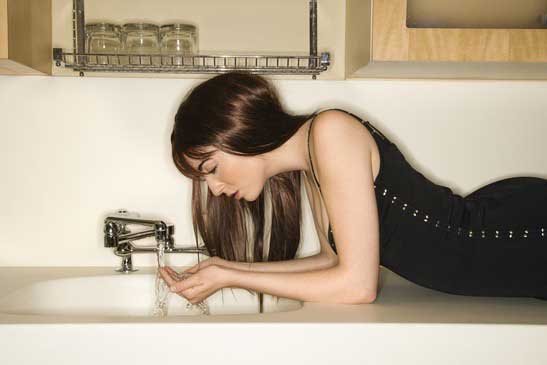The faucet has come a long way since first being invented around 1700 BC. During ancient times, faucets were used as a means of controlling water. According to historians, plumbing and faucets were used by ancient Romans to run water into both private and public bathrooms and fountains and cisterns.
Looking at the Past
Initially, faucets were designed with two handles, one used to dispense hot water and the other to dispense cold water. Although that design is still popular today, when Al Moen severely burned his hands in 1937, the single-handled faucet was developed. Between 1940 and 1945, this design was largely rejected; after coming up with a single-handled faucet that was highly functional, Moen finally succeeded.
Rather than control water temperature by turning on two faucets, users could make adjustments from a single stream of water. Around that same time, another man by the name of Landis Perry invented the ball valve for faucets with Delta, a popular brand today.
Over time, even more changes were made to faucets:
- Filters were added to cut down on contaminants.
- Pullout spray hoses were introduced for easier cleaning.
- Faucets supported by the American Disabilities Act (ADA) were introduced.
- Electronic sinks that operate by movement sensor were created.
Prior to the 1970s, buying a new faucet was straightforward, since there were not many options available. Today, consumers have a wide range of choices specific to materials, finishes, sizes, color, configurations, features, and more.
Current Possibilities
Today, not only do homeowners want functionality, they look for convenience and style. In the 1980s, new trends were introduced in Europe that eventually made their way to North America. As a result, faucets are no longer considered just a necessary fixture but a design element of the home. Over the past several years, a number of new faucet designs have emerged.
- All Drink – The tallest faucets can reach upwards of 16 inches. Introduced in 2010, these faucets were more about innovative design than they were functionality. Now, high-arc faucets are as tall as 30 inches from the base. One benefit to newer tall faucets is the flexible pulldown sprayer. In addition, the tall height makes it easier to fill an oversized pot.
- Pulldown Sprayers – These unique sprayers are offered on many faucet designs beyond high-arc. These sprayers are designed to look like part of the faucet; to use the sprayer, you simply pull down to separate it from the faucet. This maintains the integrity of the overall style while providing better functionality. Today, pulldown sprayers are available in different metals, are more flexible, and come in a much broader range of prices.
- Environmentally Friendly Faucets – While the flow of water is not regulated by the government, there are strong recommendations. For instance, a kitchen faucet that produces less than 2.2 gallons of water per minute is considered inadequate by the Environmental Protection Agency’s WaterSense program, since filling sinks and pots would take too much time. However, there are faucets on the market designed to reduce water demand and waste.
- Unique Operation – When visiting fast-food restaurants, airports, and other public facilities, hands-free motion-sensing faucets are common. Now, companies are coming up with similar concepts for the home. While several companies have come out with their own designs, one of the best was introduced by Delta. Made for residential kitchens, the Touch2O technology makes it possible to turn a faucet on simply by using a hand, wrist, or elbow to tap the lever.
- Long-Lasting Finishes – Chrome has been one of the more popular faucet finishes because of its level of durability. At one time, if an individual were interested in a different finish, a clear coating was required. Over time, this finish would chip off. Now, there is a new bonding process known as Physical Vapor Deposition (PVD) that can be used on virtually all finishes, allowing the material to last a lifetime.
- Mechanisms for “No-Drip” – For years, compression valves were part of a faucet’s design. Over time, rubber washers deteriorate, causing a compromise in water flow. Instead of rubber, faucets are now made with ceramic discs that eliminate annoying and wasteful dripping.
- Do-It-Yourself Installation – Probably one of the biggest advantages of many of the newer faucets on the market is easy installation. Of course, a licensed plumber can always assist, and there are some faucets that require professional installation. However, many of today’s faucets can be installed by homeowners. This typically saves time and is easier on the pocketbook.
